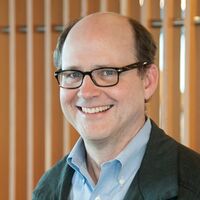User:Ckelley
Jump to navigation
Jump to search
To edit your profile click here and then select 'Edit with form' from the tabs at the top of the page.

|
User Name | Ckelley |
| Name | Charles Kelley | |
| Company | Green Urban Design | |
| Company Position | Principal | |
| City, State | Portland OR | |
| Country | United States | |
| Sectors | Buildings | |
| Membership Level | Member |
- Activities

|
Kashiwanoha Smart City Project | |
| The Kashiwanoha smart city project (first described as Kashiwanoha International Campus Town Initiative) is a planned from scratch city project, involving a greenfield smart city vision, situated around Kashiwanoha Campus Station. Kashiwonoha smart city project is a privately-led project, with Mitsui Fudosan as the main developer. It was also the owner the previous owner of the golf course on which construction work of the project were first based. However, Kashiwa city was designated as one of the "FutureCities" by the national government in 2011, making Kashiwanoha new town project eligible for government subsidies. | ||

|
Yachats Resilient Civic Campus Plan | |
| A Resilient Civic Campus Planning process was conducted by the City of Yachats to convene the community and consider how renewable power could help prepare for hazard events and leverage improvements supporting community resilience | ||

|
Inventing the Platform and Path to Sustainability Success | |
| Regenerative urbanism creates a balance where buildings, their occupants and the surrounding systems, both natural and man-made, work together to create resources rather than deplete them. Research shows that the integration of regenerative elements can yield greater returns over time. This approach uses dynamic governance systems to monitor and share the costs and benefits of urban life. It allows for multiple objectives to be achieved, from managing water and reusing waste biproducts to optimizing renewable resources across compact communities in new ways. | ||

|
Planning for Equitable Urban Density and Healthy Communities | |
| Through his leadership he has helped clients use sustainable urban design practices that give communities the greatest potential to create equitable and low carbon emitting neighborhoods. | ||

|
Supporting Community Cooperation in Urban Design | |
| Engagement, Visioning, Master Planning, and Making Agreements are found in a process that communities use to make meaningful change in their neighborhood. Community stories are precedents demonstrating the value of integrating nature with development to sustain active and vital community-oriented neighborhoods. | ||

|
Floods | |
| The intensity of extreme rainfall has “sharply” increased over the past 20 years. While floods can be more regional in nature, satellite data show hydroclimatic extreme events are increasing in frequency, duration, and extent under warming conditions. Warmer temperatures increase evaporation, putting more moisture into the atmosphere that then gets released as rain or snowfall. It is also expected that, as the climate warms, flash floods will get “flashier,” meaning that the timing of the floods will get shorter while the magnitude gets higher. | ||

|
Public Safety-Resilience and Regeneration of Communities | |
| Extreme heat and heatwaves are becoming a significant concern for many world cities and communities, and it's rapidly worsening due to the impact of climate change. Extreme heat events have severe impacts on ecosystems, infrastructure, human health, and economies. These heatwaves are not only a consequence of escalating global temperatures, but they also symbolize an acute emergency for urban environments worldwide In several locations the extreme heat is exacerbated by poor air quality caused by smoke from wildfires. | ||

|
Regenerative Urbanism | |
| Regenerative urbanism is a philosophy and approach to urban design and development that aims to create cities and communities that not only sustain themselves, but also improve the health and well-being of both the natural environment and the people who live in them. | ||